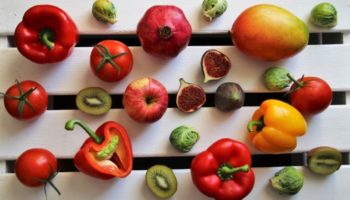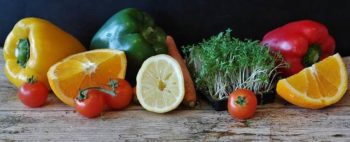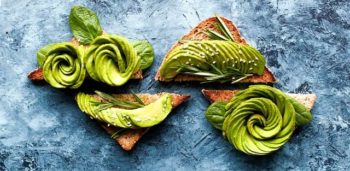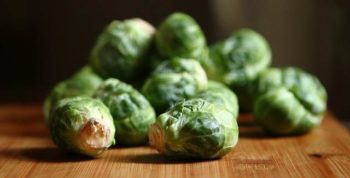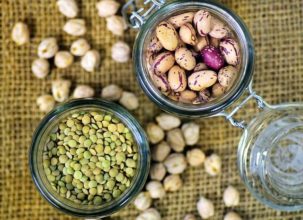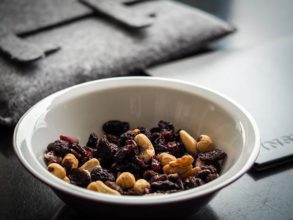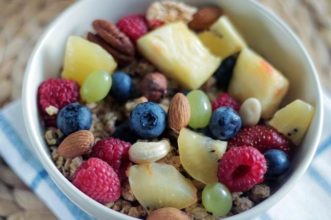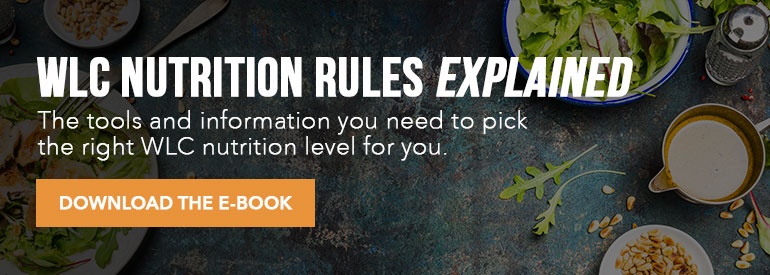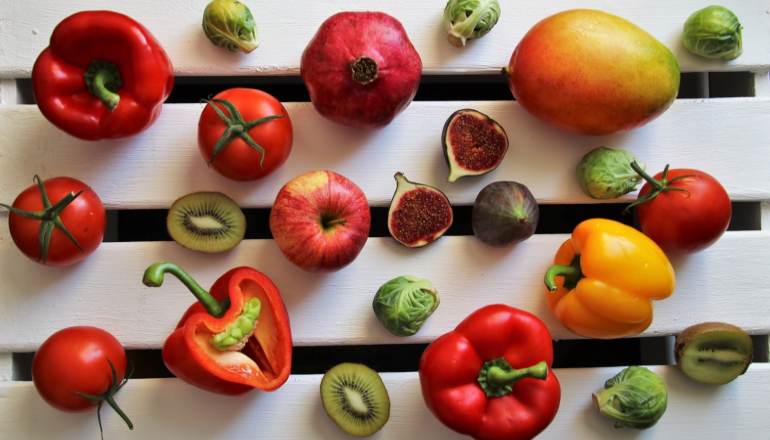 Reading Time: 8 minutes
Reading Time: 8 minutesWith all the nutrition fads that come and go, fiber typically remains a hot topic. You would think most people would agree that eating fiber is a good idea. But there are now some who believe meat is all you need to survive, such as with the Carnivore Diet.
As the steak-loving Parks and Recreation character Ron Swanson once said upon being served vegetables, “Excuse me there has been a mistake, you’ve accidentally given me the food that my food eats.” And while I suppose you can get away with eating no fiber, it’s more of a testament to the resiliency of the human body, not an optimal situation.
I want to discuss eating fiber in a way that is practical and easy to remember, but let’s first review what fiber is and why it will be your friend.
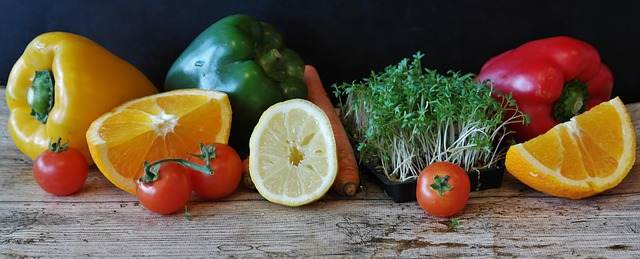
What Is Fiber, Anyway?
“Fiber” is actually carbohydrates known as polysaccharides. Polysaccharides are part of the cell walls that give plants their structure.
Polysaccharides is just a fancy name for a really long chain of carbohydrates that your normal digestive enzymes can’t read. It’s kind of like when I signed up for advanced calculus and lasted five minutes before marching down to the registrar’s office and saying, “They may as well be speaking a foreign tongue get me out of there.” That’s pretty much how the body reacts to polysaccharides. It doesn’t have the tools to convert them to energy like some animals do.
However, your normal digestive enzymes aren’t your body’s only tool. In fact, some of your gut bacteria may raise their hands (or tentacles) and say they know how to handle these polysaccharides.
This is where it’s important to know that there are essentially two types of fiber:
1. Soluble Fiber
This type of fiber is indeed fermentable by your gut bacteria. Your bacteria can read the calculus that’s built in. If you have heard the term “prebiotic,” it refers to soluble fiber. This fiber helps the gut bacteria enjoy a healthy population by providing it with food.
Soluble fiber also binds bile salts in the gut and helps you excrete them. Since cholesterol is a major ingredient in bile salts, you are excreting cholesterol, forcing the body to make more and not recycle it. This helps lower cholesterol numbers to a safe level.
You want to support good bacteria in your gut for even more reasons, including the production of certain vitamins, immune system support, hormone balance, and much more. In fact, the study of the benefits of digestive bacteria is in its infancy.
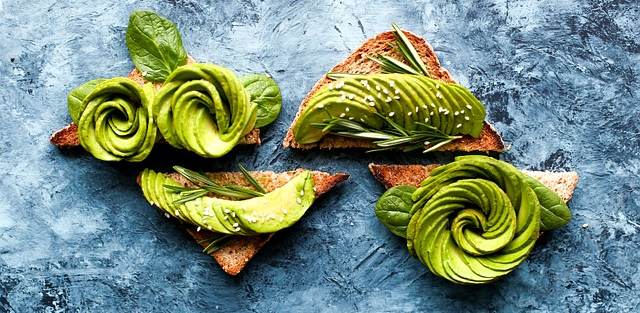
2. Insoluble Fiber
This type of fiber forces your gut bacteria to tap out of calculus class. Although research is still emerging questioning the oversimplification of what may be fermentable by our gut bacteria, this is a simple way to look at things for now.
That doesn’t mean insoluble fiber doesn’t have a good use. This type of fiber typically acts as the bulking agent for your stool. It helps with gut motility, regular bowel movements, and the prevention of intestinal diseases. It also helps you feel full and is important in calorie control.
The Sources of Fiber
It is difficult to separate soluble and insoluble fiber sources because there is significant overlap:
- Soluble fiber is found in oatmeal, citrus fruits, barley, legumes, wheat, and vegetables. (This leads many cereal and grain companies to label things as “heart healthy,” because if a food has soluble fiber it can help lower blood cholesterol. Smart marketing, but buyer beware.)
- Insoluble fibers are the things you may notice are harder to digest, like broccoli stems, nuts, and seeds.
Of course, eating a diet high in a variety of vegetables, fruits, nuts, and maybe beans and legumes will give you plenty of fiber of both types and in the proper ratios.
How Much Fiber Do You Need?
The general guideline for the amount of fiber we should consume each day is 30-40 grams for men and 25-35 grams for women. Children need fiber, too, but in smaller amounts due to their smaller digestive systems.
I’ll speak about why I don’t care much for these “total” numbers shortly, but they do give you perspective on how foods measure up. For example, if you ate an orange and a half cup serving of Brussels sprouts that would give you about 6-8 grams of fiber. Just under a cup of lentils would be about 10 grams of fiber. The Office of Disease Prevention and Health Promotion has a useful chart here where you can look up more foods.
These numbers quickly show you that having a vegetable or two a day isn’t enough. Instead, the perspective to have is that each meal and snack should include a fiber food or more. Getting 30-40 grams a day is certainly an effort, and that means your diet needs to include a lot of plant foods.
And while including these plant foods is important for fiber, you also benefit from all the other nutrients, vitamins, and minerals that come with these foods. This is why I do not recommend fiber supplements unless advised by a doctor for a specific reason. Typically, if you must supplement fiber, you aren’t eating enough fruits and vegetables.
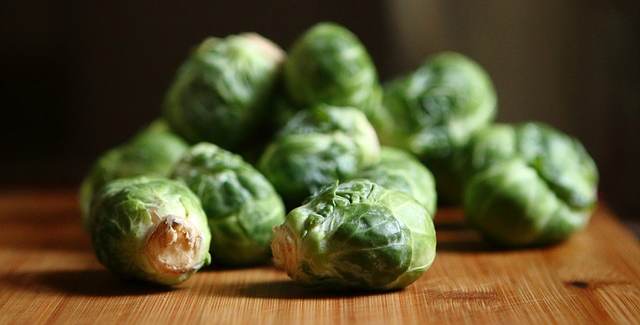
Why I Don’t Have My Nutrition Clients Count “Total Fiber”
The reason I typically do not count “total fiber” in my nutrition practice is because of my belief that if you must count fiber, you can assume you aren’t getting enough.
There are medical reasons to keep count, and it can also be helpful in the beginning to train yourself on what it takes to consume enough fiber. But if your diet does not include at least five to eight servings of fruits and vegetables per day, then you can go ahead and assume you aren’t getting enough fiber.
How to Ease Yourself Into Eating Fiber
If you remember one thing about fiber, remember that consistency is king. Consistency doesn’t get discussed enough about fiber — yet it’s the most important aspect when it comes to getting the benefits of fiber.
I’d rather see consistently low fiber numbers than to have a client consuming a wildly varying amount day to day. Those differing amounts can lead to bloating, constipation, and just feeling poor. Your gut bacteria need to have time to adjust to a certain amount of fiber. If you are cleaning up your diet, it may be a wise idea to ease into high-fiber foods.
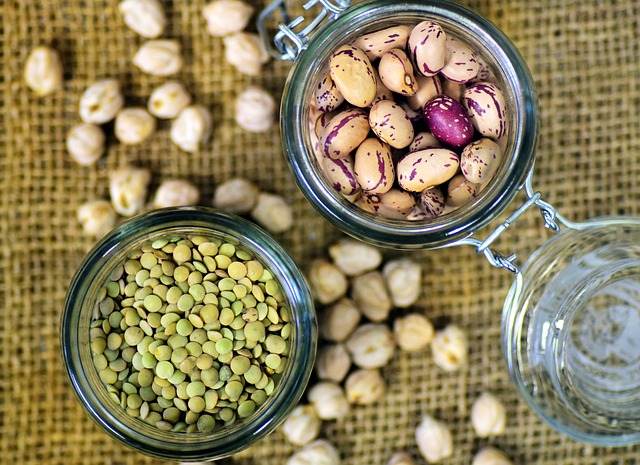
Cooked vegetables are generally easier for the body to process. So, begin with cooked veggies and small amounts of fruit, and eat consistent servings at each meal. Each week, add slightly more fruit, raw or cooked vegetables, nuts, and any other fiber foods of your choosing.
There is a thing as too much, and it will cause you to experience bloating, digestive inconsistency, and feeling full all the time. Too much is hard to accomplish, but it can happen (especially if you insist on fiber supplements). The right amount of fiber should result in regular and easy bowel movements.
Once you have found the amount of fiber that feels good for you, beware of travel and lifestyle disruptions. To help keep your fiber up to par, keep a few pre-packed baggies of nuts and dried fruit on hand, and eat them as necessary. Each bag to contain about one to two servings. For each meal where you do not get enough vegetables or fruit, have some of your homemade trail mix.
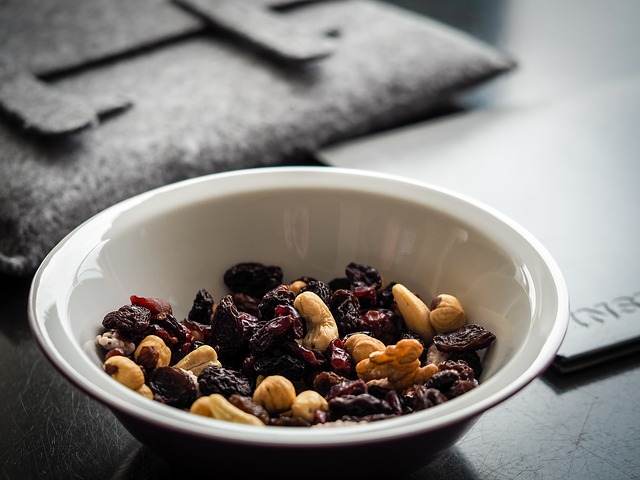
The Role of Hydration When It Comes to Fiber
To get the most out of your fiber, your water intake must also be adequate. Soluble fiber, in particular, absorbs water and swells. Therefore, you may run the risk of constipation if you consume a great amount of fiber but not enough water.
While the “proper” amount of water consumption is somewhat debated and discussed greatly, consistency again reigns supreme. Being hydrated should mean your urine is not dark, you avoid getting very thirsty, and you have high energy.
It may be wise to track your water intake as well as your fiber foods intake (you can track portions not necessarily grams) and find the right amounts for you. With this knowledge at hand, as you travel or deal with life changes, it will be easier for you to make arrangements to stay consistent.
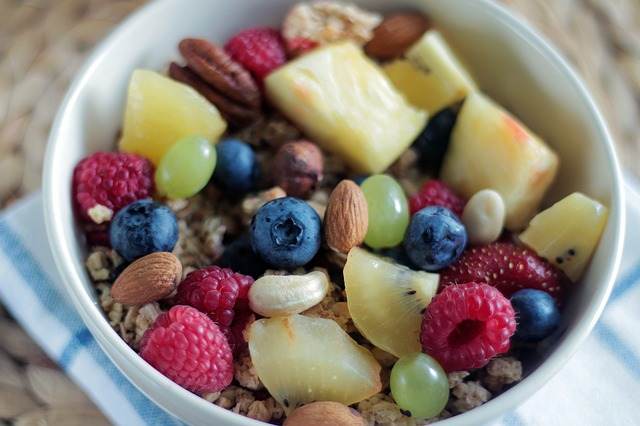
When Eating Fiber: Take It Easy and Be Consistent
While fiber is important, a generally healthy diet with proper water intake should provide all you need without too much thinking. Pay more attention to fiber when you are beginning a healthier lifestyle or having a digestive issue.
While it is exciting to start eating healthy, you may wish to ease into higher fiber foods to avoid feeling poorly. I’ve had excited clients jump into a large amount of plant food and gain up to six pounds in a few days simply due to bloat. This typically goes away, but it’s much easier to avoid a large jump too fast.
Be sure to include a wide variety of vegetables and fruit to maximize the type of fiber you’re consuming, as well as different nutrients. Remember: eat healthy and be as consistent as possible so you can be at your best.
